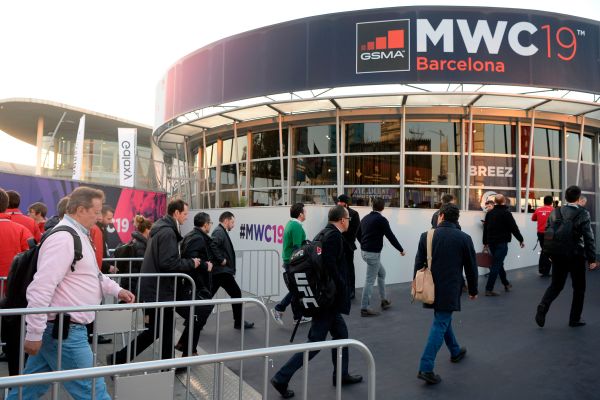I wrote a bit last week about how it was going to be a weird MWC. By “weird,” I mean beyond the usual way that everything is weird all the time now. In addition to being the second time the show has been held during a global pandemic, the smartphone industry has undergone some big changes.
Here’s a quick bullet list from the last article:
• People are upgrading their devices less frequently/spending money elsewhere
• Supply chain issues and chip shortages aren’t helping
• LG and HTC have stopped making phones and dramatically ramped down, respectively — though the latter is, very least ready to jump from one buzzword (blockchain) to another (metaverse)
• Huawei has been sidelined by sanctions
• Companies like Samsung and Apple now rely on their own events
• That, in turn, has opened the China market to Xiaomi and a ton of BBK companies
• Qualcomm has been unveiling its big Snapdragon chip, sending companies racing to have the first device with the tech
Most of these things feel like headwinds for an event that had become the de facto smartphone show. I’d suggested that MWC seemed destined to return to its default state as a B2B/network/carrier show, and things seem to have largely played out that way in Barcelona this week.
It’s doesn’t really bode well for the excitement level around what’s ostensibly become a smartphone show when arguably the two biggest pieces of consumers news — the Samsung Galaxy Book 2 Pro and Lenovo ThinkPad X13s — are both laptops. Huawei also managed to make a bit of a splash with its own with a pair of #notphones, in the form of the MatePad Paper e-reader/tablet and MateBook X Pro #notaMacbook.
Immediately following the show, I asked Huawei CTO Paul Scanlan some questions about the company’s plans to right the ship following U.S. sanctions that have hobbled its consumer efforts by cutting off access to giants like Google and Qualcomm. His response:
We try to differentiate by the other things we do, which are power management, batteries, and some software at the HarmonyOS layer. We’ve also tried to differentiate Harmony from things like an Apple or Google ecosystem by presenting it as something connects across industry components – connected treadmill, connected, bike, connected TV, connected speakers, connected air conditioners, connected heart rate monitors.
[…]In China itself, the marketshare is good still. In terms of overseas market, where maybe you need the differentiated capability of GMS (Google Mobile Services) or iOS ecosystems, obviously that’s tricky for us. That’s why we’ve extended the consumer business group to include a lot of other different devices, not just smartphones. We took a $30 billionish hit over the year for the smartphones.
The company declined to comment on its place in the Russian market following the recent invasion of Ukraine.
A number of other key Chinese manufacturers led the way in the actual device announcements. TCL added a bunch of models to its 30 line, including the TCL 30 5G — the only model of the bunch to support the aforementioned wireless technology. The company also showed off a new foldable that’s very much still in the concept stage. Former Huawei brand Honor showed off its 6.8-inch flagship, the Magic4, while former-Xiaomi brand Poco debuted the 6.7-inch X4 Pro 5G. OnePlus, for its part, offered additional details around the 10 Pro device it unveiled back at CES.
You’d be forgiven if you missed any of this earth-shattering news over the past week.
For my money, the most exciting smartphone news of the week happened outside of the show. We’re about to see the entry of two brand new players in the category, both with solid pedigrees. For reasons I went into above, this current moment is both an extremely challenging and potentially rewarding time to enter the space. The category is well established, but who knows, maybe people are waiting for a new player to shake things up?
First off is Nothing. The hardware startup is getting ready to follow in the footsteps of founder Carl Pei’s first company, OnePlus, with the launch of a new handset. A source told TechCrunch that Nothing is planning to announce its first phone by next month. The device was shown off in the back rooms of the Barcelona show. We know it will feature transparent elements in line with the company’s first product, Ear(1), but beyond that, things get hazy.
OSOM, which rose from the ashes of Essential’s spectacular implosion, meanwhile, was initially planning to use MWC as a launchpad for its first device, the OV1. Ultimately, however, Qualcomm made the company an offer it couldn’t refuse, so the firm pushed the device’s release back from Q3 to Q4.
“They love that we’re local. We have a longstanding history with the team of working directly with them,” founder and CEO Jason Keats told TechCrunch. “One of our partners is big enough that Qualcomm was like, ‘holy crap, you’re working with them? We want to be more involved with what you’re doing, as well.’ They came back and said OSOM has the opportunity to do something new, exciting. To change how all of this works. And I think, part of it is we aren’t a huge company, so if their yields aren’t gigantic, they don’t need to worry about shipping me five million chips in a month.”
The company also offered up some specs to tide us over, and showed off a clever USB-C connector with a switch that makes it possible to toggle between data transfer and just straight up charging. It’s one of those things I’m frankly surprised more companies haven’t tried.
I’m not giving up on MWC as the premier smartphone show just yet, though things largely played out as we expected. It was another weird year full of unique challenges for the industry and the world at large. Whatever remains of people’s attention spans is understandably elsewhere right now.

